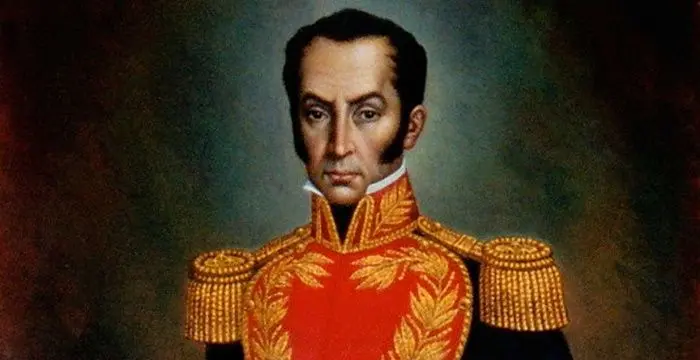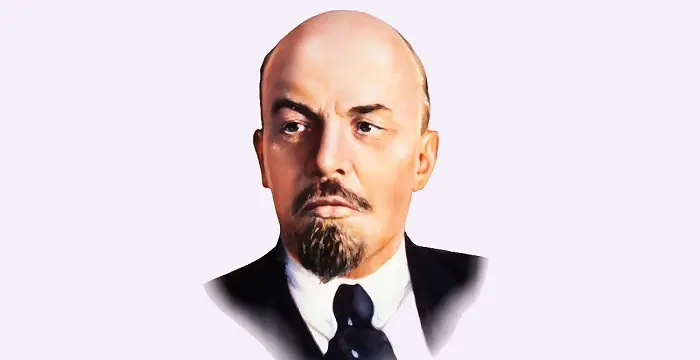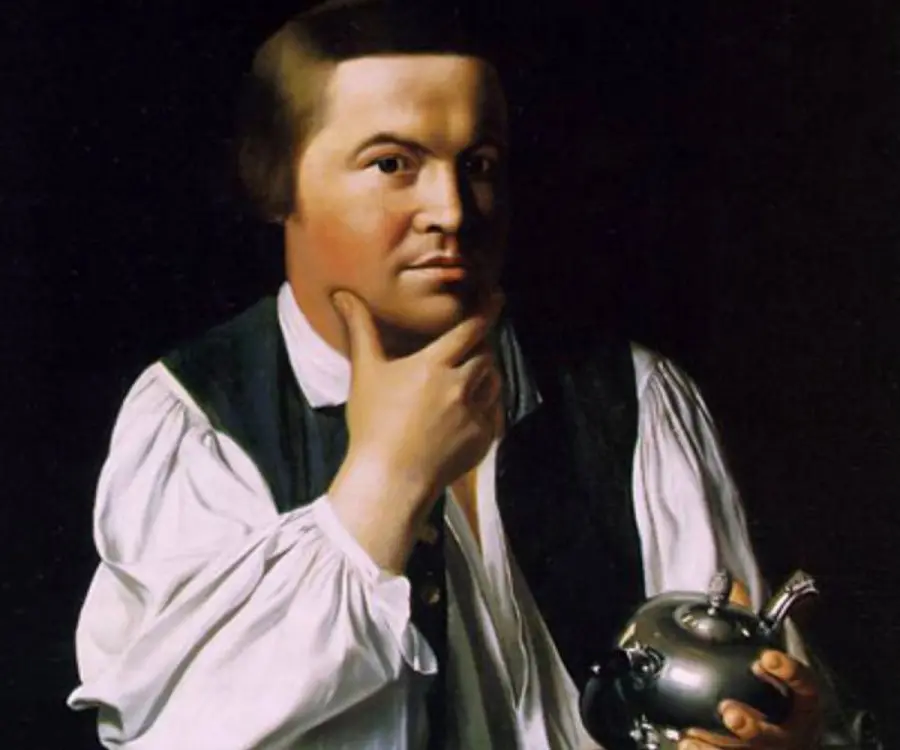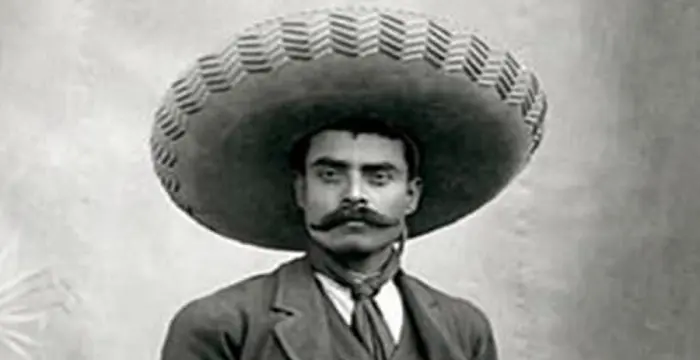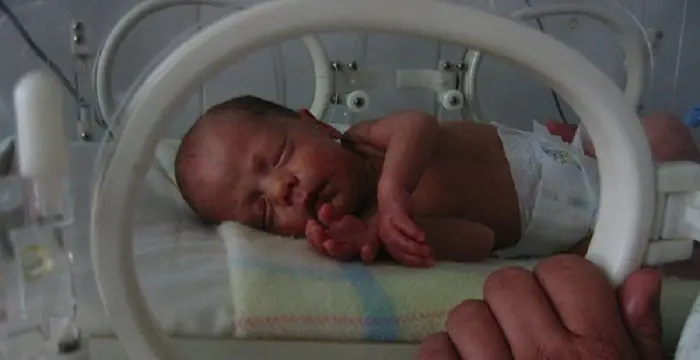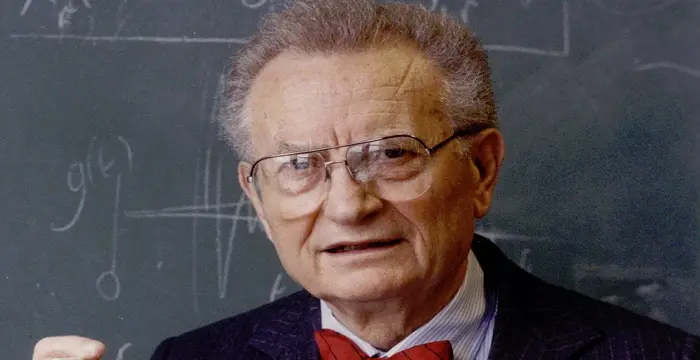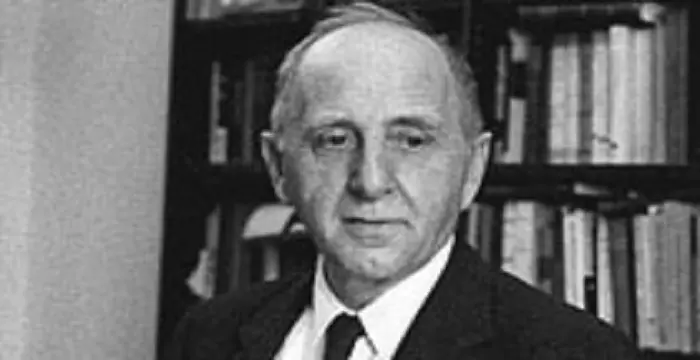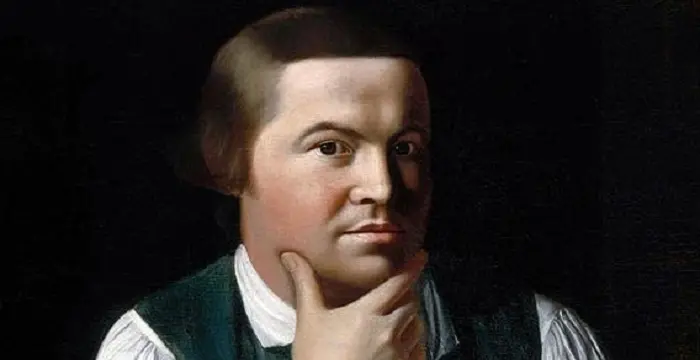
Paul Revere - Revolutionary, Family and Personal Life
Paul Revere's Personal Details
Paul Revere was an American industrialist and revolutionary
| Information | Detail |
|---|---|
| Birthday | January 1, 1735 |
| Died on | May 10, 1818 |
| Nationality | American |
| Famous | Leaders, Revolutionaries, Revolutionary |
| City/State | Boston, Massachusetts |
| Known as | Ревір Пол, Ревир, Пол |
| Childrens | Deborah Revere, Elizabeth Revere, Frances Revere, Isanna Revere, John Revere, Joshua Revere, Mary Revere, Paul Revere Jr., Sarah Revere |
| Birth Place | North End |
| Gender | Male |
| Father | Apollos Rivoire |
| Mother | Deborah Hitchborn |
| Sun Sign | Capricorn |
| Born in | North End |
| Famous as | Revolutionary |
| Died at Age | 83 |
// Famous Revolutionary
Simon Bolivar
Simón Bolívar was a Venezuelan military leader who was instrumental in independence of several Latin American countries from the Spanish rule. This biography profiles his childhood, life, achievements and timeline.
Georges Danton
Georges Danton was a French revolutionary. This biography provides detailed information about his childhood, family, personal life, achievements, etc.
Vladimir Lenin
Vladimir Lenin was a communist revolutionary who led the famous October revolution in Russia. Find more information on life of Lenin in this brief biography.
Paul Revere's photo
Who is Paul Revere?
Paul Revere was an American industrialist and a Patriot in the American Revolution, who devised an intelligence and alarm system to alert the Colonial militia of a British invasion. By profession, he was a silversmith and an engraver. His social position as a middle-class craftsman and his close contact with other social groups might have helped him in such matters. He also drew the attention of the public by various engravings such as the arrival of British troops in 1778, Boston Massacre of 1770 etc. Indeed, he was a successful propagandist and an organizer. At the same time, his activities were not limited to that alone. He also took active part in the Boston Tea Party that escalated the American Revolution. His mid night ride to Lexington on April 18, 1775 has been immortalized by Henry Wadsworth Longfellow’s poem, ‘Paul Revere’s Ride’. After the war, he went back to his profession and made a lot of money by producing articles of mass consumption. He then used the profit to set up a metal casting furnace and produce bronze bells, canons and copper bolts and spikes. Thus he became one of the early industrialists of the United States of America.
// Famous Leaders
Edi Rama
Edi Rama is the current Prime Minister of Albania. Check out this biography to know about his childhood, life, achievements, works & timeline.
Tecumseh
Tecumseh was a Native American leader of the Shawnee clan. This biography profiles his childhood, life and timeline.
Khalifa bin Zayed Al Nahyan
Sheikh Khalifa bin Zayed Al Nahyan is the current President of the United Arab Emirates (UAE). Check out this biography to know about his birthday, childhood, family life, achievements and fun facts about him.
Childhood & Early Life
Paul Revere was born on January 1, 1735 in Boston, USA. His father, Apollos Rivoire was a French migrant who, on reaching America, changed his name to more anglicized Revere. He had a goldsmith shop at North End in Boston. Paul’s mother, Deborah Hitchborn, came from a local artisan’s family. The couple had twelve children, of whom Paul was the third born.
Paul learnt his three R’s at the North Writing School. At the age of 12 he joined his father as an apprentice and learnt the art of silversmith. At the same time, he began to earn extra money by ringing bells at Old North Church.
Paul lost his father in 1754. At that time, he was only 19 year old. Although he inherited the shop he was legally too young to own it. Consequently, the family had to face financial hardship. Paul decided to join the army as it promised regular salary.
Paul Revere enlisted in the provincial army in February 1756 and was commissioned as a second lieutenant. By 1757, he came back to Boston and took control of his father’s shop in his own name. In 1760, he became a member of ‘Freemason’.
At that time there was a decline in the economy of Great Britain and it had a negative effect on his business. The Stamp Act of 1765 further deteriorated the situation. To make ends meet, he sometimes had to take up dentistry, a trade he had learnt from a practicing surgeon. However, he soon realized that things would even go down unless steps were taken to free the country from the British yoke.
The Patriot
In 1765, Paul Revere became a member of ‘Sons of Liberty’, a secret society formed to fight unjust taxes imposed by Great Britain and to protect the rights of the colonists. From this period, he started creating artifacts with political themes in support of the protesters.
Revere joined the protest actively in 1773. Towards the end of the year, a merchant ship called Dartmouth reached Boston, carrying the first shipment of tea under the terms of Tea Act, 1773. Revere, along with some other members of the North End Caucus, organized a watch so as to prevent unloading of the tea. By and by, two more ships carrying tea also arrived at the Boston Harbor.
On December 16, 1773, Revere, along with others, sneaked into the ships disguised as Native Americans. They then threw all the chests into the harbor; thus destroying the tea inside. The event later came to be known as ‘Boston Tea Party’. It is one of the iconic events in the American freedom struggle and escalated the American Revolution.
At the same time, Revere began to work as a courier for the Boston Committee of Correspondence and the Massachusetts Committee of Safety. He was required to make several trips to New York and Philadelphia in secret. However, the British came to know about these visits, mainly from the ‘loyalist Americans’. Yet, he carried on and from 1773 to 1775, he made 18 such trips.
Besides he also formed a secret group, whose main job was to watch the movement of the British troops. In 1974, it was heard the British troops were landing at Portsmouth. Revere set off for the town on horseback. However, later it turned out to be just a rumor; but the ride roused passion among the common people.
In April 1775, information came that the British troops were moving towards Lexington, which was the headquarters of Massachusetts Provincial Congress. It was believed that the British were going there to arrest rebel leaders John Hancock and Samuel Adams.
On April 18, 1775, on the instruction of Joseph Warren, Paul Revere set out for Lexington at around 10 p.m. and reached the town after midnight. William Dawes was also sent to Lexington; but via another route. Their mission was to warn the Massachusetts Provincial Congress about an impending British invasion.
On the way, Revere had to cross the Charles River, along which British war ship HMS Somerset was anchored. Earlier, he had instructed the sexton of the North Church to keep a watch on the troop movement. He was to hang one lantern on the steeple of the church if he found troops approaching via land route and two, if they were coming by river.
As Revere rode towards the river, he went on alerting the colonial militia scattered in different towns. Once there, he saw two lanterns on the steeple. Undeterred, he crossed the river by row boat bypassing the British warship and embarked at Charlestown. He then rode towards Lexington, alerting the local militia on the way.
After delivering the news, he then set out for Concord along with Dawes and another Patriot called Preston. The town initially housed the biggest colonial armory. However, by then the town’s people had moved the arms to a safer location. On the way, they were detained by the British troops.
Although Dawes and Preston were able to escape Revere was captured and questioned at gun point. Revere did not lose his cool, but misled the British into believing they were at danger. They then freed Revere, confiscating his horse and headed back to their base in order to warn their comrades. Revere then walked back to meet John Hancock and Samuel Adams.
As the Battle of Lexington unfolded, Revere helped Hancock to escape. However, he could not go back home as Boston was at that time firmly in British hand. Instead, he went to Watertown, now a part of Greater Boston. His family joined him there.
Revere kept on working as courier for the provincial congress. He was also entrusted with the job of printing local currency, which the congress used for paying the troops. In 1775, he was sent to Philadelphia to learn about the working of the gun powder mill. He then set up a powder mill at Canton, then known as Stoughton.
In 1776, Revere returned to Boston. In April 1776, he was commissioned as major in the Massachusetts militia and promoted to the rank of lieutenant colonel in November 1776. His regiment was stationed at Castle William, now known as Fort Independence, for the defense of the Boston Harbor.
He served the militia until 1779. In September 1779, he was asked to resign from his post because of some complaints lodged against him. Later, a court martial was held in 1782 and his name was cleared. However, by that time, he was well-established in his business.
The Businessman
On resigning from his post, Paul Revere tried to establish himself as a merchant, but failed due to lack of finance as well as proper connections. He then began to mass produce silverwares such as teaspoons and buckle, which had greater demand than customized high end goods. He also took technological help to increase his profit.
By 1788, he had enough money to build a large furnace. Soon he opened an iron foundry and began to produce utilitarian cast iron products such as window weights, fireplace tools and stove backs. He also made good profit out of this business.
After mastering iron casting, Paul Revere began to manufacture church bells, which had a ready market at that time. Some time now, he also established a firm named Paul Revere & Sons. His sons Paul Revere Junior and Joseph Warren Revere joined him in this business. By 1792, the company became the prime bell caster in the US.
By 1794, Paul Revere diversified further and started manufacturing canons both for the government and private parties. In 1795, he added copper bolts, nails, spikes and other fitting to his range of products.
In 1801, he opened Revere Copper Company and began to produce copper sheets using a commercially viable method. In 1803, he was commissioned by the US government to roll copper sheets to wrap the wooden hull of USS Constitution.
Revere did the job using a novel technique that made the sheets stronger and at the same time, more flexible. Since then, Revere’s copper sheets have covered the wooden hull of many ships owned by the United States Government.
Paul Revere retired from business in 1811. However, he remained active politically till his death.
Personal Life & Legacy
Paul Revere married Sarah Orne on August 4, 1757. The couple had eight children, out of which two died young. Sarah died in 1773. On October 10, 1773, Paul married Rachel Walker. Rachel also gave birth to eight children; three of them died young. Rachel died in 1813.
Revere was an ardent federalist and was committed to building a strong and economically developed United States of America.
He died on May 10, 1818 in his home at Charter Street. He was then 83 years old. His mortal remains now lie at the Granary Burial Ground in Boston.
Revere Copper Company, founded by him, continues to flourish even today. It now has three manufacturing divisions, located in New Bedford, New York and Rome. In additions, artifacts engraved personally by Paul Revere are treasured in different museums including Museum of Fine Arts, Boston and Metropolitan Museum of Art New York.
// Famous Revolutionaries
Tecumseh
Tecumseh was a Native American leader of the Shawnee clan. This biography profiles his childhood, life and timeline.
Simon Bolivar
Simón Bolívar was a Venezuelan military leader who was instrumental in independence of several Latin American countries from the Spanish rule. This biography profiles his childhood, life, achievements and timeline.
Emiliano Zapata
Emiliano Zapata was a Mexican revolutionary leader and one of the most important figures of the Mexican Revolution.Check out this biography to know about his childhood, family life, achievements and other facts about his life.
Paul Revere biography timelines
- // 1st Jan 1735Paul Revere was born on January 1, 1735 in Boston, USA. His father, Apollos Rivoire was a French migrant who, on reaching America, changed his name to more anglicized Revere. He had a goldsmith shop at North End in Boston. Paul’s mother, Deborah Hitchborn, came from a local artisan’s family. The couple had twelve children, of whom Paul was the third born.
- // 1754Paul lost his father in 1754. At that time, he was only 19 year old. Although he inherited the shop he was legally too young to own it. Consequently, the family had to face financial hardship. Paul decided to join the army as it promised regular salary.
- // 1765At that time there was a decline in the economy of Great Britain and it had a negative effect on his business. The Stamp Act of 1765 further deteriorated the situation. To make ends meet, he sometimes had to take up dentistry, a trade he had learnt from a practicing surgeon. However, he soon realized that things would even go down unless steps were taken to free the country from the British yoke.
- // 1765In 1765, Paul Revere became a member of ‘Sons of Liberty’, a secret society formed to fight unjust taxes imposed by Great Britain and to protect the rights of the colonists. From this period, he started creating artifacts with political themes in support of the protesters.
- // 1773Revere joined the protest actively in 1773. Towards the end of the year, a merchant ship called Dartmouth reached Boston, carrying the first shipment of tea under the terms of Tea Act, 1773. Revere, along with some other members of the North End Caucus, organized a watch so as to prevent unloading of the tea. By and by, two more ships carrying tea also arrived at the Boston Harbor.
- // 1773 To 1775At the same time, Revere began to work as a courier for the Boston Committee of Correspondence and the Massachusetts Committee of Safety. He was required to make several trips to New York and Philadelphia in secret. However, the British came to know about these visits, mainly from the ‘loyalist Americans’. Yet, he carried on and from 1773 to 1775, he made 18 such trips.
- // 16th Dec 1773On December 16, 1773, Revere, along with others, sneaked into the ships disguised as Native Americans. They then threw all the chests into the harbor; thus destroying the tea inside. The event later came to be known as ‘Boston Tea Party’. It is one of the iconic events in the American freedom struggle and escalated the American Revolution.
- // 1775Revere kept on working as courier for the provincial congress. He was also entrusted with the job of printing local currency, which the congress used for paying the troops. In 1775, he was sent to Philadelphia to learn about the working of the gun powder mill. He then set up a powder mill at Canton, then known as Stoughton.
- // Apr 1775In April 1775, information came that the British troops were moving towards Lexington, which was the headquarters of Massachusetts Provincial Congress. It was believed that the British were going there to arrest rebel leaders John Hancock and Samuel Adams.
- // 18th Apr 1775On April 18, 1775, on the instruction of Joseph Warren, Paul Revere set out for Lexington at around 10 p.m. and reached the town after midnight. William Dawes was also sent to Lexington; but via another route. Their mission was to warn the Massachusetts Provincial Congress about an impending British invasion.
- // 1788By 1788, he had enough money to build a large furnace. Soon he opened an iron foundry and began to produce utilitarian cast iron products such as window weights, fireplace tools and stove backs. He also made good profit out of this business.
- // 1792After mastering iron casting, Paul Revere began to manufacture church bells, which had a ready market at that time. Some time now, he also established a firm named Paul Revere & Sons. His sons Paul Revere Junior and Joseph Warren Revere joined him in this business. By 1792, the company became the prime bell caster in the US.
- // 1794 To 1795By 1794, Paul Revere diversified further and started manufacturing canons both for the government and private parties. In 1795, he added copper bolts, nails, spikes and other fitting to his range of products.
- // 1801 To 1803In 1801, he opened Revere Copper Company and began to produce copper sheets using a commercially viable method. In 1803, he was commissioned by the US government to roll copper sheets to wrap the wooden hull of USS Constitution.
- // 1811Paul Revere retired from business in 1811. However, he remained active politically till his death.
- // 10th May 1818He died on May 10, 1818 in his home at Charter Street. He was then 83 years old. His mortal remains now lie at the Granary Burial Ground in Boston.
- // 1974Besides he also formed a secret group, whose main job was to watch the movement of the British troops. In 1974, it was heard the British troops were landing at Portsmouth. Revere set off for the town on horseback. However, later it turned out to be just a rumor; but the ride roused passion among the common people.
// Famous Massachusetts peoples
Eugenia Cooney
Check out all that you wanted to know about Eugenia Cooney, the famous American Vlogger & YouTube Personality; her birthday, her family and personal life, her boyfriends, fun trivia facts and more.
Patrick Bouvier Kennedy
Patrick Bouvier Kennedy was the last child of American President John F. Kennedy and First Lady Jacqueline Bouvier Kennedy.
Nic Wallace
Check out all that you wanted to know about Nic Wallace, the famous American Instagram star; his birthday, his family and personal life, his girlfriends, fun trivia facts and more.
Paul Samuelson
Nobel laureate Paul Anthony Samuelson is referred to as the ‘Father of Modern Economics’. This biography profiles his childhood, life, career, achievements and interesting facts about him.
Simon Kuznets
Simon Kuznets was a noted Russian-American economist, statistician, demographer, and economic historian. Check out this biography to know about his childhood, family life, achievements and other facts related to his life.
Steve Carell
Steve Carell is an American actor, comedian, producer, director and writer. This biography profiles his childhood, early life, career, major works, awards, personal life, legacy, timeline and trivia.
Paul Revere's FAQ
What is Paul Revere birthday?
Paul Revere was born at 1735-01-01
When was Paul Revere died?
Paul Revere was died at 1818-05-10
Where was Paul Revere died?
Paul Revere was died in Boston
Which age was Paul Revere died?
Paul Revere was died at age 83
Where is Paul Revere's birth place?
Paul Revere was born in North End
What is Paul Revere nationalities?
Paul Revere's nationalities is American
Who is Paul Revere childrens?
Paul Revere's childrens is Deborah Revere, Elizabeth Revere, Frances Revere, Isanna Revere, John Revere, Joshua Revere, Mary Revere, Paul Revere Jr., Sarah Revere
Who is Paul Revere's father?
Paul Revere's father is Apollos Rivoire
Who is Paul Revere's mother?
Paul Revere's mother is Deborah Hitchborn
What is Paul Revere's sun sign?
Paul Revere is Capricorn
How famous is Paul Revere?
Paul Revere is famouse as Revolutionary
